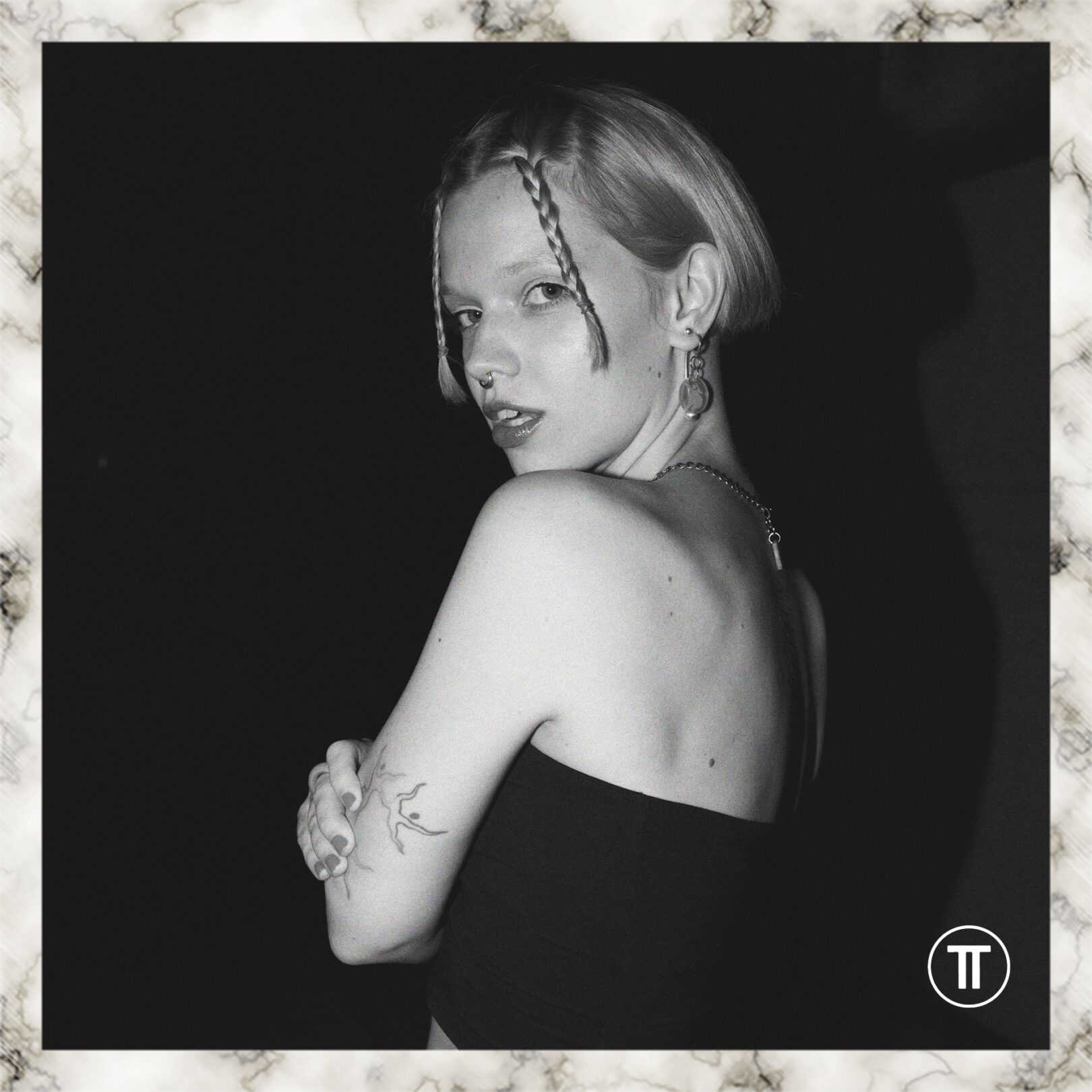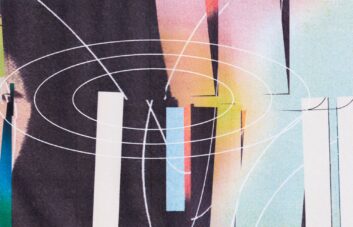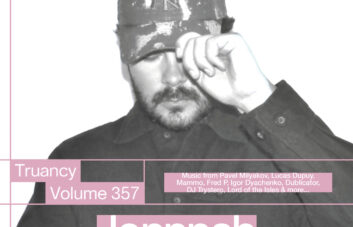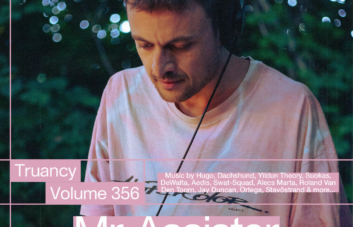Since debuting with her first full solo EP ‘Elastik’ on Nervous Horizon last year, Ma Sha, the New York based DJ and Kindergarten Records label boss has continued to establish her status as one of the city’s leading producers of hard-to-define, low-end, percussive dance music. As a label head, she has executed her vision in a way that feels like a family of producers and friends, all united by the goal of releasing highly explorative, high-energy music. The Lot Radio massive B2B sessions are the monthly tune ins you need to be locked in for. Each of Ma Sha’s releases since Elastik has outshone the last, with her newest EP ‘Pull To Stop‘ on Steel City Dance Discs, serving as a personal deep dive into her reconnection with the fast-paced nature of New York life. The EP is loud, unrelenting and totally additive. We caught up with Ma Sha to chat about her formative backyard parties, her teenage breakdancing years, the collective ethos in starting up Kindergarten Records, adding new hardware to her production methods and how’s she managed to find a perfect flow state in surfing. Inspired by watching the breakdancing events at this year’s Olympics, her Truancy Volume is a nostalgic trip into the atmospheres and feelings she had whilst attending breakdancing camp as a teen, all packaged up into a raucous hour of unpredictability. In an interview with DJ Mag, Ma Sha mentions that “Kindergarten is all about music that is not afraid to go in different directions” and she backs it up here, weaving her way through a host of percussive club work outs from the likes of Sobolik, DJ JM, Maquis Son Sistèm, J:Kenzo and more.
Hey Ma Sha! Thanks for answering some questions for us! So how have you been recently? What’s 2024 and your summer been like for you thus far? Any particular highlights? “Hi Riccardo! Thanks so much for having me! This platform means a lot to me, so I’m very grateful to participate in the mix series. I’ve been feeling fantastic, really energized and inspired. This summer, I spent a lot of time in Lisbon, surfing and clearing my mind, which helped me focus on my music production. I also released my second EP, so it’s been a period of excitement and gratitude for me.”
So as it’s your first time getting interviewed on the site, I thought we’d go back and just ask about how you got into electronic music in the first place. What was the first dance music record that really stuck with you that you feel kind of set things in motion for you as a DJ? “For sure! I began breakdancing as a teenager, and our teachers would play a mix of breakbeat, old-school electro, and hip hop—this was my first real exposure to the music I love today. Then, when I moved to New York at 18, I dove headfirst into the city’s music scene. Shortly after, I moved in with a friend, Zanzie, who had a turntable setup, and I started practicing with a box of $1 records I received as a gift. At the time I was mostly playing house and disco. One of the first records that really made an impression on me was Metro’s ‘Turnstyle Turbulance’ from Nu Groove Records.”

In an interview with Mixmag you mention you come from a bit of a curatorial background that kind of helped when starting Kindergarten. Can you tell us a bit about that background? You mentioned it started as far back as school? “Yes, I studied performance studies at university and interned at several art museums, galleries, and an arts foundation, as well as in the editorial department of a magazine. These experiences helped me hone my curatorial skills. At the end of my university studies, I began working at the music distribution company !K7, where I gained insights into label operations, DSPs, PR, and campaign planning. So, when the idea of starting a label came to my mind, I wasn’t nervous about the lack of knowledge, and I felt like I would figure it out on the go.”
You were also a dancer as a kid growing up? What sort of dance was it and do you feel that informed your interest in dance music as well? “I was breakdancing throughout my teenage years, which profoundly shaped my musical tastes from an early age. My teachers emphasized the performative aspects of dance, explaining that many b-boys and b-girls, especially in competitions, focus on the athletic aspects of breakdancing—power moves. They encouraged me to practice feeling the music and visualizing it through my movements. I always tried to embody the music in my dance moves, particularly during toprock. That’s where my love for smaller details like textures and vocal chops comes from, now that I think about it! Interacting with DJs was also integral to my experience. During jam sessions and battles, with an MC and a DJ spinning records, I felt deeply connected to the music.”
You moved to New York when you were 18. What was that like? Were you immersing yourself completely in music? What sort of parties were you hitting up? “I moved to New York at 18 for university, without knowing anyone. It wasn’t easy since English is my third language—I had studied French at my school. Adjusting to everyone speaking a foreign language around me wasn’t the easiest thing, but I was dedicated and got through it :) I started going out right away and was hitting up lots of different parties at venues like Bossa Nova Civic Club—so much respect and love for this venue <3. We are doing a Kindergarten party there next month, and it’s crazy to think it’s been 10 years since I first started going there! I also spent time at Good Room, Kinfolk, Output, Unter, Black Flamingo, and many other venues and parties, immersing myself in house, disco, hard techno, and other genres. Unfortunately, many of these venues in Brooklyn have closed due to ongoing gentrification, yet they played a crucial role in my musical journey.”
So what can you tell us about some certain backyard parties on Bedford Ave? Would you say this is where Kindergarten kind of took form in its early stages? I imagine it was a crowd of people you were all quite familiar with too? “Aww, I love that you dug up this little piece of history! Yes, about eight years ago, my friend Zanzie and I moved into this place on Bedford Ave with a great backyard. It was a time when you could still find affordable rents in the neighborhood and lots of clubs were still thriving nearby. We named our Wi-Fi ‘Kindergarten’ because of our age and the garden setting. The name came together very quickly and naturally :) Zanzie had a little setup, and we decided to start hosting small evening parties and we created Facebook events for them. These parties, which began around 5PM and ended at midnight, featured friends and various artists from different crews like Photay, Marco Weibel, Yaeji, Ade Kassim, Tokyo Megaplex, David Marston, Enayet, and the Astro Nautico crew, playing in our little garden without any restrictions on genres or moods.”

How did the parties slowly expand? Was it a case of they were just getting too big for the courtyard? “We threw about eight parties in a backyard before deciding to switch things up as the gatherings grew larger and we were preparing to move out of the house due to a shady landlord lol. We then moved to the venue H0l0 in Ridgewood, which is still around today, keeping the DIY backyard vibe alive with all the plants we brought from the house and placed all over the venue —over 30 of them. We also hung lights and vines from the ceiling to recreate the backyard atmosphere. As Kindergarten grew, we hosted events at various NYC venues like Elsewhere Zone One, Bossa Nova, Heaven, Mansions, and a metal workshop, exploring a range of sounds from house and disco (Turtle Bugg, Tom Noble, Vagabundo Club Social, David Marston & Aquiles Navarro, KFeelz, and Fa Tik) to techno, fast, and darker sounds (Cera Khin, Kilbourne, Sleep300, and Maŕa). We also tried completely different vibes. I remember once, the venue booker asked who my dream booking would be, and that’s how we ended up booking DJ Bus Replacement Service. That party was wild—despite a smoke machine mishap that brought firefighters to the dance floor, the party never stopped!”
It’s been four years since the first record on Kindergarten. Can you tell us a little bit about what went into getting the label off the group and what ideas you had going into it. Do you feel you’ve managed to achieve what you set out to initially do? “The idea of starting a label came to me shortly before the pandemic. Due to some issues with the lacquer, our first record didn’t come out until a few months later, in May 2020, right when all the record stores were closed. It was a tough and unfortunate start for the project—I still have KINDER001 records lying around haha. The inspiration for the label came from knowing people who were creating amazing music, and I wanted to support them and help bring their work to a wider audience. One of those people was my roommate, Despina, who was producing incredible bass lines just behind my wall.
Initially, my goal was simply to support friends and artists I admired in the scene. As the label began to take shape with the first few releases, I wanted to showcase a fresh take on the bass music emerging from NYC. However, I didn’t want to limit the label’s discography by location, so I started looking for similar sounds elsewhere, which led me to discover artists like Stolen Velour, Ziyiz, and Train To Eltanin.
From the start, the main idea was to create a crew, a collective, a family of people who are close friends and just have fun together. That’s why I take my time when signing new artists; I prefer to meet them and connect on a personal level. I’m also incredibly grateful for our residency at The Lot Radio. It has given us a space to have fun as friends, collaborate, and invite guests who truly inspire us. So, yes, I hope that Kindergarten embodies all the ideas I had in mind from the start.”
So let’s talk about some of your recent music. You recently put out one of your biggest releases to date with the ‘Pull To Stop’ EP on Steel City Dance Discs. There’s always been an energy to your music, but you’ve described this release as ‘reconnecting with your own surrounding energy’. Can you tell us a bit more about that? “With my recent ‘Pull To Stop’ EP on Steel City Dance Discs, I took a different approach compared to my last record on Nervous Horizon, which was more introspective. This time, I embraced the energy of my surroundings by producing it in public spaces around my neighborhood in NY, Ridgewood. I moved from one coffeeshop to another, absorbing the energy of people and spaces around me and channeling that into my music. It was a fun and refreshing process!”
Although the Ma Sha alias in itself is quite new in terms of your production output you’ve been producing for a while, especially in collaboration with Rù as Sha Ru. The solo releases seem to be coming out pretty fast now. Do you have a comfortable work flow for your solo productions now? “I have a lot of timelines and deadlines to juggle between Kindergarten, Sha Ru, and my solo project, but I think I’ve been managing pretty well so far (fingers crossed haha). I’ve been trying to keep things organized with a clear Google Calendar schedule, color-coding sessions for each project. Fortunately, we have a solid workflow in place with Sha Ru, as we’ve been making music together for the last six years. That’s really helped in keeping the schedule madness under control.”
What was it like releasing your own music on your own label with the collaborative ‘Slipstreaming’ EP with Sobolik? “Releasing the ‘Slipstreaming’ EP with Tom Sobolik on my own label was a mix of stress and excitement :) Tom is obviously one of my favorite producers, so I was initially a bit nervous about proposing a collaborative EP. However, once they agreed, the entire process became incredibly dynamic and fulfilling. We spent many sessions together, exchanging sketches, giving feedback, and co-working, which deepened our involvement in each other’s creative progress. The experience was particularly enjoyable because of the time we spent together. When it came to releasing my own music on my label, I was so focused on the production and balance of the split EP that I didn’t really think much about anything else.”

Have the tools you’ve used mainly always been the same? Or have you had to rethink the way you produce your music as you’re learnt more and progressed as a producer? “While I have certain tools and routines I’ve relied on over the years, I’ve been very open to evolving my workflow, especially since my solo project is relatively new. Recently, I joined Martyn’s 3024 program, which has introduced me to fresh ideas on sampling organization and arrangement. This year, I also acquired my first piece of hardware, a Digitone, which has quickly become central to my setup. As I learn more about it—or any new plugin I get—it often becomes the starting point for my production sessions, making my creative process constantly evolve.”
Can you tell us a bit about your current musical influences and what is it about them that you look to channel into your own productions? “Right now, my biggest influences are my friends and the community around me :) Their unique sounds and boundary-pushing approach constantly inspire me. In my productions, I try to capture that same energy and experiment as much as possible.”
How does music fit into your daily routine? Do you regularly listen to music or search for new records? How do you focus your intentions and craft, and how distinct are your roles as a producer, DJ, label owner and music enthusiast? “I listen to music all the time :) In my day job at the distribution company, I pitch releases to various streaming and download platforms, which means I’m constantly exposed to new music across genres like electronic, jazz, classical, alternative etc. I also dedicate time to my label, where I stay involved with each release from the early stages and review demos (though I’m a bit slow with that, which I hope is understandable since I manage the label solo). Additionally, I set aside specific times for digging for new records, which usually aligns with my mixing or gig schedule.
Earlier this year, I started therapy focused on work, which has been immensely helpful in creating a balanced and healthy workflow. It has taught me to assign specific time slots for tasks, use color coding to prioritize by urgency and responsibility, and balance my energy between creative and administrative tasks while also paying attention to my body’s needs. Although it’s challenging to distinguish between my roles as a producer, DJ, label owner—especially with everything being on my laptop and the constant multitasking—but I hope I’m getting better at it!”
Can you tell us about three albums that a) define you getting into electronic music in general, b) maybe a midway album when you were fully invested in DJing and and c) a recent album that you’ve especially enjoyed? And what made these albums so special at the time.
“The very first release that defined my entry into electronic music was probably something from my breakdancing lessons—perhaps The Megatrons’ ‘Rock The Planet’ or Freestyle’s ‘Don’t Stop The Rock.’ Both are amazing tracks that played a significant role in shaping my early love for electronic music!
A midway album when I was fully invested in DJing was TSVI’s Sacred Drums. I remember when I was still primarily focused on discovering and collecting house and disco records, this album caught my attention. I started incorporating it into my sets, and it fit seamlessly, even though it was quite different from the rest of the music I was playing. That was a beautiful discovery for me. It was one of the first doors that led me to explore more percussive and bass-heavy sounds. I feel very grateful to have had the opportunity to release my own music on Nervous Horizon last year—it was definitely a full-circle moment for me :)
As for a recent album I’ve especially enjoyed, even though it’s not super recent, the album that immediately comes to mind is Marina Herlop’s ‘Nekkuja’ and ‘Pripyat’—I’ve been especially enjoying them lately. Every time I listen, I discover something new. She’s currently one of the most inspirational artists to me, and I try to attend any live performance of hers whenever I can. In fact, I just saw her in Berlin and it was mind-blowing as always. The unique sonic universe she creates, combined with her stage presence, inspires me every single time.”
What sort of other hobbies or interests do you have outside of electronic music? Are there any books, films, shows or other things you’ve seen or been reading/watching that you might want to share? “My main obsession besides music these days is surfing :) I took up the sport nearly two years ago, and it’s become vital for my mental well-being and overall happiness. The intense focus and a deep connection with the water it requires—where even a moment’s distraction can mean the ocean hitting you hard—helps clear my mind of all stress.
Entering the ocean washes away my worries and stress, putting me in a perfect flow state. It’s amazing, and it’s been a great way to get in the right mindset for production sessions, as that flow state transitions seamlessly into my session view :)
Aside from that, I’ve been reading quite a bit of fiction this summer, enjoying works by one of my favorite authors, Murakami, and exploring new novels by Kazuo Ishiguro. I’m also fascinated by urban design and have been reading ‘Emergent Tokyo: Designing The Spontaneous City.’ Additionally, I’ve been inspired by ‘This Woman’s Work: Essays on Music’ by Kim Gordon and Sinéad Gleeson (shout out to my friend Kaitlyn who opened a fantastic new bookstore in Lisbon and recommended all these goodies).
As for films, I’ve been captivated by Gregg Araki’s intense and visually stunning movies this summer, and the soundtracks are amazing. I’ve also revisited some of Gaspar Noé’s films, which are always a massive source of inspiration for me. The last movie I watched was ‘Love Lies Bleeding’ by Rose Glass, which was quite impressive.”

Could you describe the process of creating this mix? Was there a specific message or feeling you wanted to convey? “The process of creating this mix began with several ideas swirling around, but something unexpected set the tone—watching breakdancing at the Olympics! Friends kept sending me battle videos, which brought back a flood of nostalgic memories. It reminded me of my time at breakdancing camp in the forest, finding my groove to whatever track was playing during the jams.
That feeling of being in the dance circle, under street lamps in the middle of the forest at night, created a trippy, atmospheric vibe that I wanted to channel into the mix. The percussion, which I always focused on while dancing, became a central element in the narrative. From there, the mix evolved naturally as I recorded it, but those night jam sessions were the initial spark.”
Last, usual question from us, what was the last thing to put a big smile on your face and when was the last time you had a proper dance? “The last thing to put a big smile on my face was probably a cute dog I saw on the street—I’m obsessed with these little cuties! haha
The last time I had a proper dance was a few weeks ago when I saw Identified Patient and Bambounou playing Tempio Festival in Berlin. It was a deeply immersive experience—eyes closed and fully engaged :)”
Ma Sha: Soundcloud, Instagram, Resident Advisor, Bandcamp
Kindergarten Records: Soundcloud, Instagram, Bandcamp




